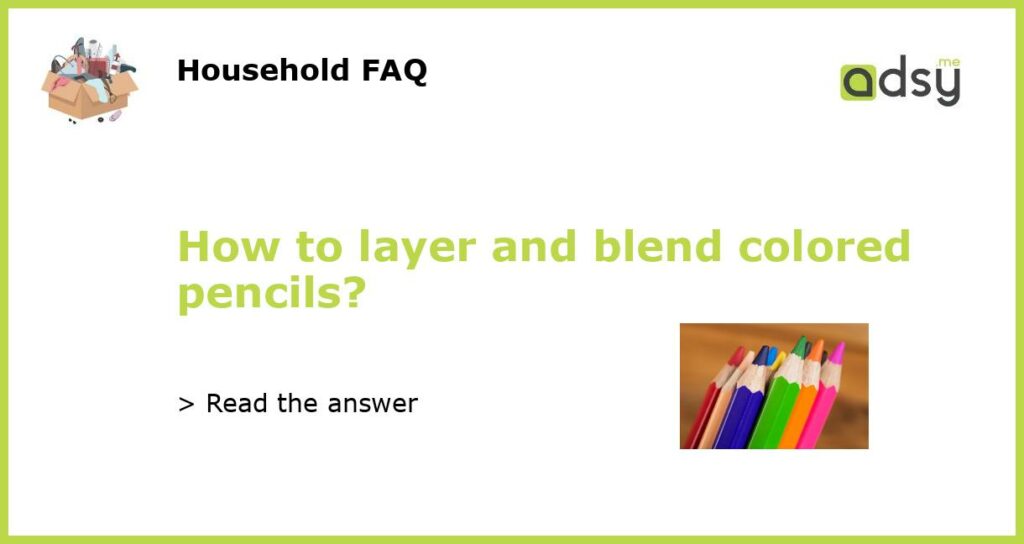Understanding the basics of layering and blending colored pencils
Colored pencils are one of the most versatile mediums used by artists, both novice and professional. They offer a wide range of colors, precision, and control, making them ideal for creating vibrant and intricate artwork. However, to achieve stunning results with colored pencils, you need to master the art of layering and blending. In this article, we’ll delve into the basics of layering and blending colored pencils to help you create more depth, dimension, and richness in your artwork.
Layering colored pencils for depth and richness
Layering colored pencils means adding multiple layers of colors on top of one another to create depth, richness, and vibrancy. The secret to effective layering is to start with lighter colors, gradually building up to darker colors. Begin by sketching your design lightly with a pencil, then fill in the base colors using light pressure. You can repeat this process multiple times until you achieve a vibrant, intense hue.
Blending colored pencils for smooth transitions
Blending colored pencils involves smoothing out the lines and colors to create subtle transitions between hues. You can blend colored pencils using various techniques, such as using a blending tool, blending with a colorless blender, or using solvents. A blending tool is a paper stump or a piece of tissue paper used to blend colors smoothly. A colorless blender pencil is a specialized pencil that you use to blend colored pencils for a smooth finish. Using a solvent such as odorless mineral spirits can also help to dissolve the wax in colored pencils, creating a glossy finish.
Experimenting with other techniques to enhance your artwork
Experimenting with additional techniques can help you create unique, impressive artwork with colored pencils. You can use crosshatching, scumbling, burnishing, stippling, or other techniques to create texture, depth, and richness in your artwork. Crosshatching involves creating overlapping lines of different colors to create a textured effect. Scumbling involves creating a random and varied blend of colors, burnishing involves using a heavy hand to smooth out the pencil strokes, and stippling involves creating small dots on the surface of the paper.
Choosing the right type of paper and pencils for your artwork
The type of paper and pencils you use can also impact the quality and outcome of your artwork. You should choose a quality paper that can handle multiple layers of colored pencils without tearing or smudging, such as Bristol or Stonehenge paper. You should also choose high-quality colored pencils with a rich pigment and a smooth texture, such as Prismacolor or Faber-Castell.






